Review of Tarzan Collection, The
Introduction
Like many of my era, I became entranced with the TV `Tarzan` of the 1960`s (Ron Ely), a series that made `Daktari` look like `Watch with Mother`. Exuding confidence, charisma and charm and always standing on the moral high ground, Ely`s Tarzan was a natural hero. I was to spend many hours stalking around the garden tackling imaginary lions and crocodiles with my plastic Bowie knife.
It wasn`t until later that I learnt that for Tarzan aficionado`s, Johnny Weissmuller is considered the greatest of all Tarzans - and there have been many, both prior to Weissmuller`s adoption of the loin cloth and since his was hung up to dry. It`s also true that Maureen O`Sullivan is considered the finest Jane. Even Edgar Rice Burroughs, the author of Tarzan, personally endorsed Weissmuller and O`Sullivan for their 1932 debut as the wildest couple in town.
This DVD set "THE TARZAN COLLECTION" is a nicely packaged 4 DVD set, comprising all 6 movies featuring this inimitable duo and covers the 10 years from 1932 to 1942. By this time Weismuller was noticeably twice the man he started out as though he continued on without O`Sullivan to make a further 6 movies for the studio. This tasty set has two movies per disc with a further disc containing a feature length documentary and a number of other interesting period extras (more later).
First up is "TARZAN THE APE MAN" (1932) featuring Weissmuller, O`Sullivan, Neil Hamilton, C. Aubrey Smith and directed by W.S. Van Dyke. Arguably the finest of the set (though `Tarzan and his Mate` gets my vote), this movie features the lion`s share of jungle action with some impressive sequences for its day. It does use rather a lot of stock footage in it`s opening chapter (derived in the main from the studios previous jungle hit, `Trader Horn`) and by today`s standards some of the back projection and continuity is laughable, but it`s worth remembering that this movie has passed it`s seventieth birthday.
It`s also hopelessly politically incorrect with some of the worst treatment of the `ethnic majority` ever committed to film, and some of Tarzan`s approach to romance might be considered unacceptable by today`s standards. Jane, however, is a curiously tough cookie (there`s some real girl power here) and Weismuller is simply magnificent as the Ape-man, delivering his infrequent lines with a primitive growl. As an Olympic Gold Medal Winner, his swimming sequences are really impressive, though on close inspection the crocodiles less so.
The film`s most bizarre moments are during the closing sections when Jane`s group (looking for the mythical `elephants graveyard` in search of ivory) are abducted by a vicious pygmy tribe, played in the main by dozens of blacked-up midgets. Now, you don`t see stuff like that everyday! This first movie in the set was the only one directed by W.S. Van Dyke, famous in his day as `One Shot Woody`, one of the fastest Directors in film history. (He shot `The Thin Man` for example in just 18 days!). He was the obvious choice for the movie as he`d enjoyed great success for the studio a year earlier with his epic `Trader Horn` which was shot in Africa. Once was obviously enough for him though as he chose Florida`s Silver Springs for this, quickly establishing it as the default location for jungle movies from that point on.
For trivia freaks, Van Dyke returned from his Africa shoot (Trader Horn) with some 20 extra reels of footage, much of which he used in `Tarzan`.
Next up is TARZAN AND HIS MATE" (1934) with Weissmuller, O`Sullivan, Neil Hamilton, Paul Cavanaugh and directed by Bernard H. Hyman. This movie re-treads familiar ground, though technically is superior to the previous effort with some quite acceptable back-projection and effects. However, some of the animals here are less convincing, and even Cheetah makes an appearance at one point as a human in a monkey outfit. Not quite `Planet of the Apes` but getting there!
This is principally Jane`s film, and is an exploration of how a sophisticated socialite is getting on with `the primitive life`. Harry (her Father`s dashing younger business partner) returns in search of Ivory and attempts to bring Jane back to Civilisation.
Harry: Don`t you ever miss the fun you used to have?
Jane: I have fun.
Harry: Those June nights in England...
Jane: Moonlight on The Thames.
Harry: Dance, glass of champagne, sitting with real people and listening to the music.
Jane: Real people? I wonder.
Arlington: Well, at least the men are civilized.
Jane: Does that make them any better? (Cheetah is seen smoking a cigarette and Jane laughs.) There`s your civilization for you!
It`s great stuff!
Being pre-Hays code this movie is perhaps the raciest of the set. "But darling, I have to put on clothes. There are other people here and they`d think I was immodest." However, Tarzan holds on to her dress as he throws her in the water, and the dress is ripped off her body. Skinny-dippin` Jane takes a swim, doing underwater somersaults with Tarzan in a scene that would never have made it post-Hays code. Sadly.
The remaining four films in the set were directed by Richard Thorpe.
"TARZAN ESCAPES" (1936) with Weissmuller, O`Sullivan, John Buckler, Benita Hume, William Henry and directed by Richard Thorpe. White hunter Captain Fry tries to take Tarzan back to civilization, caged for public display like a fairground freak. The slimy Captain Fry convinces a grief stricken Tarzan that Jane has decided to leave him in the hands of fate and this is enough to convince him to climb into the cage himself, betrayed and lost. There`s plenty of romance afoot, though less action here than the previous two action-packed adventures. Still - check out those giant lizards towards the end!
"TARZAN FINDS A SON" (1939) with Weissmuller, O`Sullivan, Johnny Sheffield, Ian Hunter, Henry Stephenson, Henry Wilcoxon, Laraine Day and directed by Richard Thorpe, does pretty much what it says on the tin. Needless to say, rather than suggest any wrong-doings (post-Hays Code) the un-wed couple conveniently `find` a son rather than conjure one up in the usual manner. Check out the incredible shrinking cousin as a native uses some of that dark-African jungle voodoo. "That used to be a full grown man".
The penultimate movie "TARZAN`S SECRET TREASURE" (1941) with Weissmuller, O`Sullivan, Johnny Sheffield, Reginald Owen, Tom Conway, Philip Dorn, Barry Fitzgerald and directed by Richard Thorpe is a more tepid affair than the previous four. Boy (Johnny Sheffield) finds gold at the bottom of the local river and when Jane explains what it is and what it can buy, Boy legs it to go `spend, spend, spend!` Unsuspecting Professor Elliott (Reginald Owen) and O`Doul (Barry Fitzgerald), a group of researchers keen to study the son of Tarzan, happen to have a couple of villains with them who rather fancy the spoils for themselves. But the filthy lucre can`t spoil the jungle-bliss of our happy jungle familiy! This production was beset with difficulties (not least the death of Irving Thalberg) and budget cuts forced the use of stock shots taken from earlier movies in the series.
"TARZAN`S NEW YORK ADVENTURE" (1942) with Weissmuller, O`Sullivan, Johnny Sheffield, Charles Bickford, Chill Wills (Francis the Talking Mule fame), Paul Kelly, Virginia Grey and directed by Richard Thorpe sees Tarzan and the rest of the cast clothed and residing in NYC. This was the end of the road for O`Sullivan who was feeling typecast ten years into her career as Jane. It was also the end of the road for MGM as the series then moved over to RKO. This storyline allowed O`Sullivan to (at last) get into some contemporary and fashionable rags too, though to be fair, there`s still a healthy chunk of jungle action at the start of the movie.
Tarzan and Jane travel to New York to find Boy who has been kidnapped from their jungle home by Trappers who see his amazing rapport with animals as a valuable ingredient for a circus. The transition for Tarzan adjusting to life in the "Stone Jungle" and having Cheetah along provides the great comic relief in this story as firstly the couple book into a hotel where Tarzan comes into contact with all the modern appliances such as radios and proper showers. This whole scenario was later `aped` in similar fashion by Paul Hogan`s Crocodile Dundee. There is plenty of action across the tops of some of New York`s skyscrapers as well as a spectacular dive by Tarzan off the Brooklyn Bridge.
All the movies are digitally restored picture & sound in Black/White presented in Standard Format preserving the 4:3 aspect ratio of their original theatrical exhibitions.
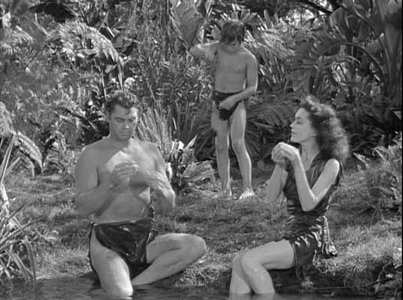
Video
Presented in it`s original 1:33:1 ratio, the films are of variable quality, though are generally in very good shape for their years. There`s little sign of wear (some vertical scratches which are notoriously difficult to clean up as they tend to run frame after frame) and occasionally (as on `Tarzan and his mate`) there is a slightly soft look to the transfers which look like they could do with a contrast boost, though frankly sufficient contrast adjustment can probably be made on your own set. All in all, minor gripes for the sake of it. These are generally very fine prints nicely transferred.
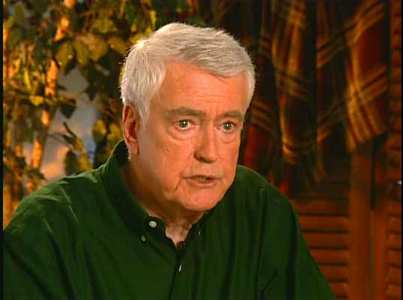
Audio
Curiously variable in the first two pictures, but this was an industry still on a learning curve. Often tinny, the early dialogue in `Tarzan and the Ape` is difficult to discern.
Also notable is the complete absence of music in the first movie. Just the opening and closing scenes are blessed, which kind of adds to the `realistic` atmosphere of the movie. There`s also a distinct absence of an `atmos` bed in the first two movies, despite generously applied spot effects. Curious, though probably pretty standard for the time.
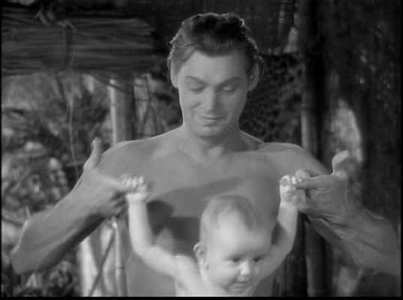
Features
The `Special Features Disc` is positively brimming with some very worthwhile extras. These include a feature length documentary (Tarzan: Silver Screen King of the Jungle) which offers a very comprehensive and fascinating overview of the Tarzan phenomenon, with the emphasis firmly on Weismuller and O`Sullivan (who is featured in interview here). The only irritant is the wall-to-wall music throughout.
There`s a `making of` featurette here called `MGM on Location: with Johnny Weismuller` which is a lot of period fun (using phrases like `A crew of expert lens twisters are setting up a battery of cameras…") and is actually quite informative.
There`s another short called `Rodeo Dough` which is a short comedy featuring two girls hitch-hiking from Hollywood to Kokomo, and getting a lift from the mono-syllabic Weismuller.
There are also amusing original theatrical trailers for each movie which are fun too.
There`s a comedy short featuring Jimmy Durante (in his first flush of youth) called `Schnarzan the Conqueror` which might have been hilarious in its day, but didn`t tickle my funny-bone, though adds more period context.
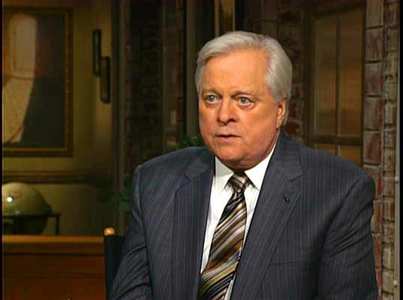
Conclusion
For the already converted this must represent an absolutely essential purchase. It`s a beautifully presented package comprising the first six of Weismuller`s `Tarzan` movies (arguably his best), each also featuring the delectable Maureen O`Sullivan as the finest of all Jane`s. The pack includes a host of worthwhile extras, not least a feature length documentary that`s a delight in it`s own right. It would be surly to groan about the occasional vertical scratches on the prints (the earliest are more than seventy years old), or the muddled sound in the earliest movies in the collection. Despite their now primitive effects and editing, these movies are an absolute delight. As period pieces they are fascinating - and as movies they still excite and entertain.
Perhaps the best thing of all in these six films is Weismuller`s Tarzan cry which has been described (by the great film writer, David Thomson) as "…part Austrian-yodel, part gorilla and part testosterone`. (Wiesmuller was of Austrian descent). It`s now synonymous with `Tarzan` and has been adopted by countless Tarzan`s since.
I thoroughly recommend this collection, and commend Warner Brothers on a job well done, despite its clearly limited market appeal.
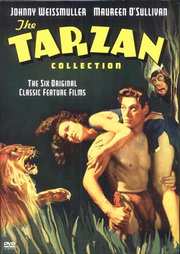
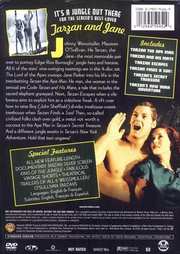




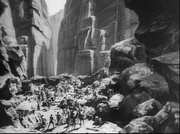

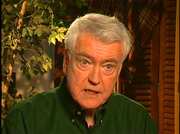
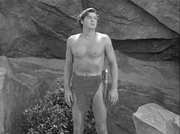
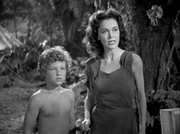
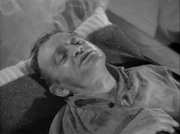
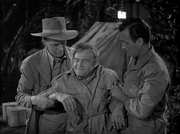
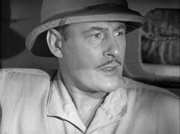
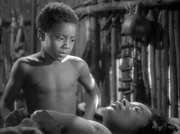

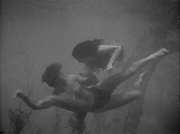
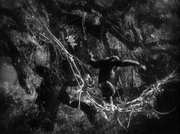
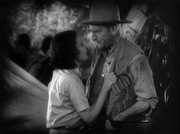
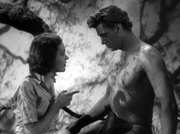
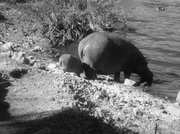
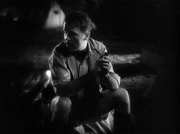
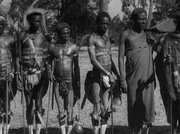
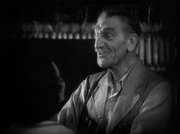

































Your Opinions and Comments
Be the first to post a comment!